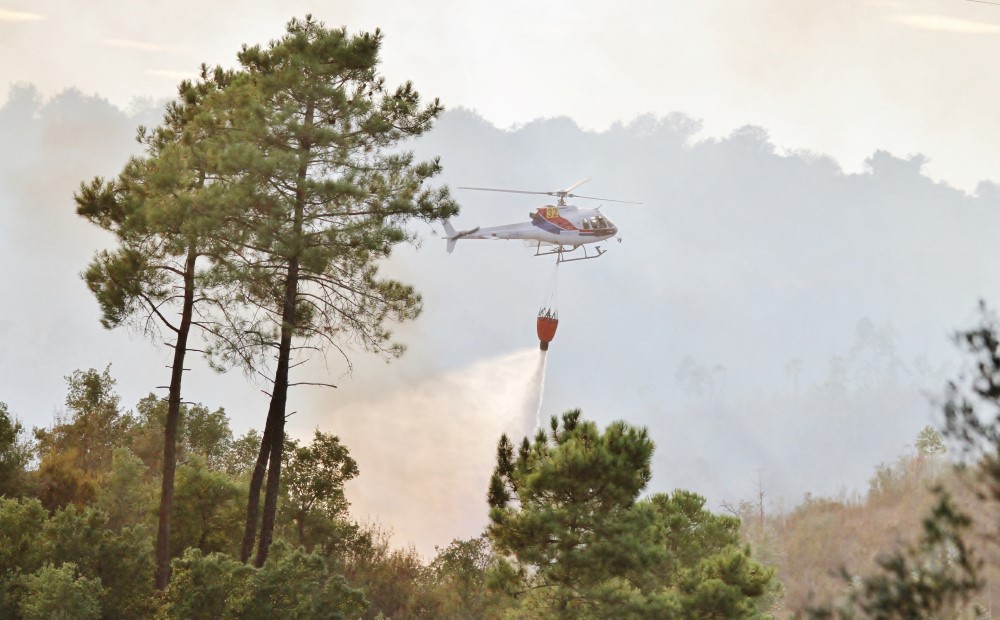 A pilot project to take advantage of rainwater harvesting from water lines, thus allowing its use for agroforestry purposes and for the creation of water reserves in combating forest fires, was presented by UTAD – Universidade de Trás-os- Montes and Alto Douro.
A pilot project to take advantage of rainwater harvesting from water lines, thus allowing its use for agroforestry purposes and for the creation of water reserves in combating forest fires, was presented by UTAD – Universidade de Trás-os- Montes and Alto Douro.
At the same time, this project makes it possible to reduce the pressure on the use of surface water resources. This project has already been submitted for patent and published in the «Journal of Hydrology».
The pilot project is part of the integrated investigation carried out by the Departments of Forestry Sciences, Geology and Civil Engineering at UTAD, which has conducted an important investigation into the interaction between forest ecosystems and aquatic ecosystems.
The results of this work were recently published in prestigious international journals (Science of the Total Environment and Journal of Hydrology) and prove the profound hydrological alterations, soil loss and eutrophication resulting from forest fires.
As an institution of knowledge concerned with social and environmental problems, with recognized research and knowledge in the forestry and water issues, UTAD has addressed several alerts to policy makers and society in general, regarding the «constant depletion of natural resources with repercussions very serious, not only in the forest and ecosystem, but also in terms of the climate and essential goods such as water and soil, as well as the need to train more engineers and invest in research in this area».
For about a month, Portugal has had a Plan for the Prevention, Monitoring and Monitoring of the Effects of Drought, which includes a set of preventive measures for this phenomenon, which has recorded the worst levels in the last 20 years.
However, according to Professor Rui Cortes, from the Forestry Department at UTAD, “the possibility of mitigating the drought is very limited and the main measures now recommended – such as the hiring of tanker trucks for public supply and the removal of fish biomass of some reservoirs in the South, to avoid fish rot and inherent public health problems – they are part of a very restricted contingency action and destined to make up for specific deficiencies in the supply to the populations”.
According to the same person in charge, “the effect of eutrophication should not be forgotten: the lower the flow, the worse the quality of the water, which will tend to have a much higher concentration of nutrients”.
As Rui Cortes explains, “the less forest, the lower the capacity for water infiltration into the soil, for two reasons: the effect of erosion that leads to considerable soil losses, and the frequent formation of hydrophobic (repellent) surface soil layers to water) that create the compaction of the upper layers, especially in eucalyptus. This situation leads to another dramatic consequence, of which little has been said and which could take place as early as next winter: the effect of floods”.
The floods are the result of less evapotranspiration from the forest cover and greater surface runoff, due to the waterproofing of extensive areas. Therefore, less forest, higher flow peaks, more flooding, more river erosion.
Rui Cortes adds that forest fires can also have a direct effect on water quality caused by the intense export of nutrients (especially nitrogenous and phosphate compounds), affecting its use for multiple purposes.
To what extent can the devastating effect of climate change, which will tend to become more acute, be limited? First of all, it should be taken into account that water consumption by agriculture amounts to 81% of the total, so that irrigation efficiency and the use of suitable crops represent key aspects.
Responding in an innovative way to the listed problems, UTAD has now presented a pilot project that seeks to take advantage of rainwater harvesting in water lines selected for this purpose, allowing its use for agroforestry purposes and even for the creation of water reserves for combating forest fires, while reducing the pressure on the use of surface water resources.


















Comments